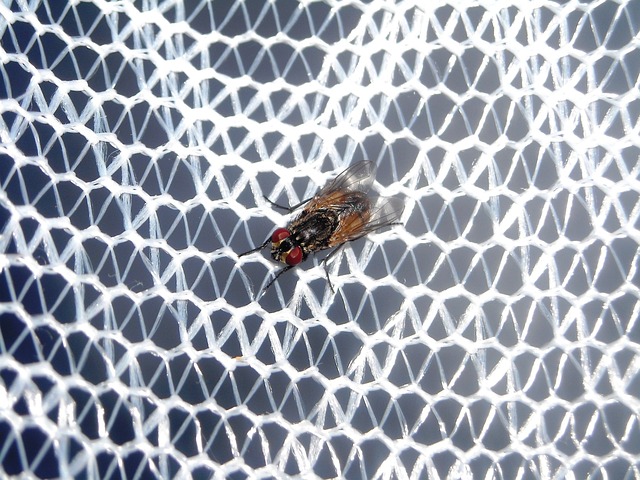Mosquito and tick control require a multi-step approach. This includes eliminating breeding grounds (stagnant water for mosquitoes, dense foliage for ticks), using physical barriers and repellents, and employing integrated pest management strategies like habitat modification and targeted treatments. Environmental considerations push towards natural methods and reduced chemical pesticides to protect non-target species and prevent resistance. Safety precautions are crucial when using any control services, with monitoring for adverse reactions recommended after treatment.
Mosquito and tick control are essential for maintaining a healthy living environment. This comprehensive guide explores various aspects of mosquito and tick management, from identifying breeding grounds to natural repellents, targeted outdoor treatments, indoor prevention, and professional services. Learn about environmental impact considerations and safety precautions during and after treatments. Discover the best practices to keep these pests at bay and enjoy a peaceful outdoors.
Understanding Mosquito and Tick Control: The Basic Needs

Mosquito and tick control is a multifaceted process that involves understanding the basic needs and behaviors of these pests. Key factors include identifying breeding grounds, such as stagnant water sources, which are ideal for mosquito larvae development. Regular elimination of these standing waters through drainage or treatment can significantly reduce mosquito populations.
For tick control, addressing their preferred habitats, like tall grass and dense foliage, is crucial. Maintaining a well-mowed lawn and clearing vegetation around homes can create an environment less hospitable to ticks. Additionally, implementing physical barriers, such as screening doors and windows, and using repellents designed for both mosquitoes and ticks, are effective strategies in protecting individuals and properties from these pesky intruders.
Identifying Common Mosquito Breeding Grounds

Mosquitoes breed in stagnant water, so identifying and eliminating these habitats is a key step in mosquito and tick control. Common breeding grounds include abandoned swimming pools, buckets, containers, and any other items holding water. Even small amounts of standing water in bird baths or flower pots can become fertile ground for mosquitoes. By regularly emptying and cleaning these areas, residents can significantly reduce the local mosquito population.
Moreover, checking for leaks in outdoor plumbing and fixing them promptly is another effective strategy. Gutters and downspouts should be cleared of debris to ensure proper drainage, preventing water from pooling. Landscaping plays a role too; keeping vegetation trimmed and creating open spaces helps reduce moisture retention, making it less appealing for mosquitoes to breed.
Natural and Chemical Repellents: What Works Best?

When it comes to mosquito and tick control, understanding the effectiveness of natural versus chemical repellents is key. Natural repellents, such as citronella, lavender, and peppermint oils, offer a popular and perceived safer alternative to synthetic chemicals. These essential oils are often used in candles, sprays, and skins, leveraging their distinct aromas to deter mosquitoes.
However, while natural methods have their charm, scientific studies suggest that chemical repellents like DEET (N,N-diethyl-m-toluamide) prove more potent in protecting against mosquito bites. DEET is widely recognized for its efficiency in warding off a range of insect vectors, including mosquitoes carrying diseases such as malaria and dengue. Its ability to disrupt insects’ nervous systems makes it a reliable option for outdoor activities and areas with high mosquito populations.
Targeted Outdoor Treatments for Mosquito Control

Mosquito and tick control is a targeted outdoor treatment that involves strategic applications of approved pesticides. These treatments are designed to eliminate or significantly reduce mosquito populations in specific areas, such as parks, playgrounds, and residential yards. Professional services use advanced equipment and expert knowledge to ensure the safe and effective delivery of these treatments, minimizing environmental impact while maximizing results.
The process often includes identifying breeding grounds, applying targeted pesticides, and utilizing natural predators like fish or birds. In some cases, specialized devices that emit ultrasonic sounds or release repellent chemicals are employed. These measures work in harmony to create a barrier against mosquitoes, providing relief for residents and reducing the risk of mosquito-borne diseases.
Indoor Mosquito Prevention Measures

To effectively prevent mosquitoes indoors, several measures can be taken. One of the most crucial is ensuring proper ventilation and air circulation throughout the building. Mosquitoes are weak fliers and prefer stagnant air, so keeping spaces well-ventilated makes them less appealing for resting and breeding. Regular cleaning and maintenance of indoor spaces are also vital; eliminating standing water, which serves as a breeding ground for mosquitoes and ticks control, is essential to deterring these pests.
Using mosquito and tick control products designed for indoor use can further fortify prevention efforts. These range from natural repellents to more sophisticated insect growth regulators (IGRs) that disrupt the mosquito lifecycle. Additionally, installing physical barriers like fine-mesh screens on windows and doors not only keeps mosquitoes out but also serves as a long-term solution for mosquito and tick control. Combining these strategies creates a multi-layered defense, significantly reducing the indoor presence of these pests.
Tackling Tick Infestations: A Different Approach

With mosquito control services becoming ever more crucial, professionals are also turning their attention to another pesky problem: ticks. Unlike mosquitoes, which breed in standing water, ticks thrive in moist, lush environments, making them a challenge to control. Traditional methods like insecticides often prove ineffective as ticks can withstand many common treatments.
A different approach is needed for tick control, focusing on integrated pest management strategies. This involves a combination of tactics including habitat modification, regular yard maintenance, and the use of repellents. Professionals also employ specialized equipment and treatments that target tick hotspots, ensuring a more comprehensive and effective solution. By understanding ticks’ unique behaviors and environmental needs, mosquito control services can offer tailored solutions to keep both mosquitoes and ticks at bay.
Professional Mosquito and Tick Control Services: When to Hire

Professional mosquito and tick control services become a necessity when these pests pose significant health risks. Mosquitoes are vectors for various diseases like Zika, West Nile, and malaria, while ticks carry conditions such as Lyme disease and Rocky Mountain spotted fever. Hiring experts in mosquito and tick control is especially important for areas with high pest populations or for those looking to prevent outbreaks.
Timely intervention is key. Professional services employ advanced methods and equipment that target adult mosquitoes and their larvae, breaking the breeding cycle. They also offer ongoing treatments tailored to specific regions and seasons, ensuring a safer environment throughout the year. With their expertise, you can enjoy outdoor spaces without the worry of mosquito-borne illnesses, creating a healthier and more enjoyable living or working environment.
The Environmental Impact of Mosquito Control Methods

Mosquito and tick control methods have a significant environmental impact, which must be carefully considered. Chemical pesticides, while effective in reducing mosquito populations, can also harm non-target species, including beneficial insects, birds, and aquatic life. The overuse or misuse of these chemicals can disrupt local ecosystems and lead to the development of pesticide resistance in insect populations.
Alternative methods, such as biological control, habitat manipulation, and the use of natural repellents, offer more environmentally friendly options. Biological control involves introducing natural predators or parasites to target mosquito larvae and adults. Habitat manipulation strategies, like eliminating standing water and improving drainage, reduce breeding sites for mosquitoes. Natural repellents, derived from plants or other organic sources, can provide a safe and sustainable solution for personal protection against these pests.
Staying Safe: Precautions During and After Treatment

When utilizing mosquito and tick control services, safety is paramount. During treatment, ensure all recommended precautions are followed, including staying indoors and avoiding direct contact with treated areas until advised otherwise. After treatment, keep an eye out for any adverse reactions or unexpected symptoms. Mosquito control products may cause temporary skin irritation or allergic responses in some individuals, so monitoring your health is crucial. Additionally, wash hands thoroughly after coming into contact with treated surfaces to prevent accidental ingestion or prolonged exposure.
